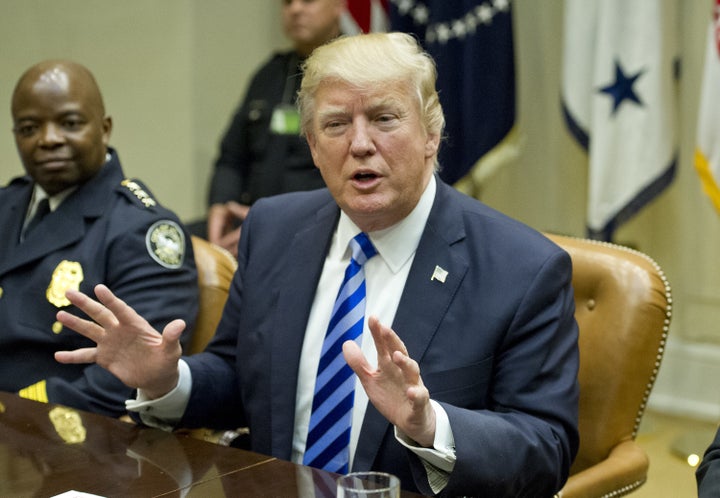
The last time the United States waged a two front war was World War II. From 1941 through 1945, over sixteen million Americans served in the military to sustain that two front effort which culminated in the defeat of the Axis powers. By contrast the projected end strength for Fiscal Year 2017 for the U.S. military is roughly one point two million; about a sixteenth of what we had during the Second World War. Yet in 2017 the U.S. is moving in the direction of another two front war, one in North Korea and the other in Syria. Is the U.S. prepared to win a two front or even a multi-front war?
Certainly the threats today are not as extreme as those faced during World War II. Neither North Korea nor Syria possesses anything like the military power of the Axis regimes of the 1940s. But what about Russia and China? Suppose American military action against North Korea draws the U.S. into war with China and in Syria U.S. military strikes trigger war with Russia. The North Korean scenario has historical precedence; during the Korean War in the 1950s the U.S. and China did fight each other directly. And over the crowded skies of Syria U.S. aircraft must operate under daily threat of Russian missile attack; a single miscalculation on either side could lead to a shoot-down likely sparking a wider conflict.
So the question of a two front war means is the U.S. prepared to fight a war against China and Russia simultaneously? Proponents of greater military action in North Korea and Syria are convinced we can, or that Russia and China won’t fight, but they haven’t thought it through. The question of can we win a two front war must be answered by evaluating two interrelated parts: military capabilities and political will.
Even a single conventional attack on North Korea could trigger a new war on the Korean peninsula. South Korea would likely suffer considerable damage, but the real question is what China would do. China does not want the North Korean regime to collapse or be overthrown because Beijing doesn’t want waves of refugees pouring into their country. China’s recent deployment of 150,000 troops to the North Korean border has a twofold purpose: to prepare for a possible war and prevent refugees from fleeing into China. In 1950 the U.S. was certain China would not intervene militarily in Korea; we should not forget we were wrong.
While the United States possesses technological superiority, China has two advantages which could offset that: China has more manpower, and it shares a border with North Korea meaning it can move ground troops there more quickly than the U.S. China also possesses advanced A2D2, anti-area/access-denial capabilities, which could make it dangerous and difficult for U.S. forces to resupply the Korean peninsula. The takeover or destruction of South Korea is a possibility. If South Korean forces helped by the U.S. defeated the North, the South Koreans would certainly press the attack northward. Either way, at least half the peninsula gets destroyed.
Meanwhile Russia’s conventional forces are no match for the U.S. military, but they don’t have to be. Russia needs a warm water port which Syria is now providing. With a national interest at stake, Russia may choose war in Syria. There is no basis for the assumption that Russia won’t fight. Russia can not only inflict damage on the U.S. in Syria, it could also attack U.S. allies in Eastern Europe, creating what in effect would be a third front for the U.S. military worry about. In 2016 Russian military exercises proved they could mass large numbers of troops quickly near the borders of Eastern Europe. A rapid attack there would force Americans to commit resources to a third front and to face the prospect of bringing back the draft.
Conflicts tend to be longer and more difficult than anticipated. A long term multi-front war could not be won without bringing back the draft in the United States. The All Volunteer force is an outstanding group of professionals, but against China and Russia they simply would not have enough numbers to accomplish the mission. The draft would be needed, but bringing it back poses two problems.
First, it would ignite a political firestorm. A big reason there is no anti-war movement in the U.S. is because there is no draft. Bringing back the draft would bring back the anti-war movement, which would sap political will precisely at the moment the U.S. needed to unify and strengthen it. Second, according to Mission Readiness, 75% of draft age Americans do not meet minimum military standards for service either because they are overweight, have a criminal record, or use drugs. Even if Congress made the draft legal, there is no guarantee it would give the U.S. military a quick boost on the battlefield.
Nationalism is still potent force in China and Russia. The idea that the U.S., China, and Russia could not fight another war because they have too many economic ties is belied by history. That exact sentiment was used to argue World War I and World War II could not happen. But they did. Americans are not the only people who rally together during wartime. Russians and Chinese do too, respectively.
The U.S. military is capable of conducting global operations in dozens of hot spots at the same time, but that is fundamentally different from fighting a multi-front war. Right now access to those hot spots is not contested. In a multi-front war access would not only be contested, it could be denied. As the old saying goes “amateurs study tactics, professionals study logistics.” In addition, the American people are not directly under attack right now. Both Russia and China not only possess significant offensive cyber-attack capabilities, they also have nuclear weapons. The threat of nuclear weapons would change the political calculus by forcing the U.S. military not to push too hard, placing America in a dilemma.
If we crushed the conventional forces of Russia and China, they could go nuclear out of desperation to avoid defeat. If we didn’t crush their military forces, we wouldn’t be able to secure victory. This dilemma would prolong the conflict, creating a more difficult test of political will for an already divided America. Countries hit with a combination of economic challenges, external attacks and powerful political stress can undergo radical transformations. Germany did during the 1930s along with Russia at the end of World War I. Could that happen to the United States today?
Traditionally Americans rally together when during wartime, and we likely would in the case of war with Russia and China. But how long would that enthusiasm last—can this generation sustain war will for years while under constant cyber-attack and in the face of proven Russian disinformation capabilities? If Russia can disrupt a Presidential election, why can’t it disrupt a war effort? Could these combination of factors reshape the U.S. democracy in unforeseen and dangerous ways? They could.
Ultimately, a nation must go to war if the citizens judge it to be a necessity. But today the U.S. faces no such dire need. We would be choosing a two front war, not being forced into one by our enemies as was the case in World War II. It is a choice we should not make because we face no imminent threat, it would be all risk for no gain, and we aren’t as a nation prepared for it. If President Trump’s supporters want a two front war, they will have to do more than cheer from the sidelines. They will have to sign up, suit up, and physically go to war. Hopefully that realization will make them think twice about supporting needless conflicts. The United States should only fight wars of necessity, not wars of choice.
